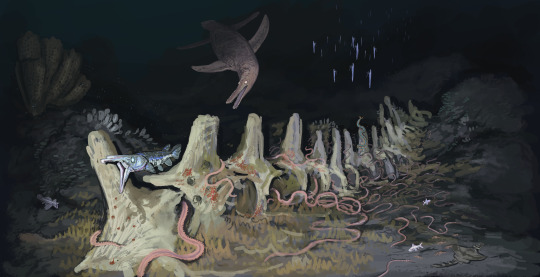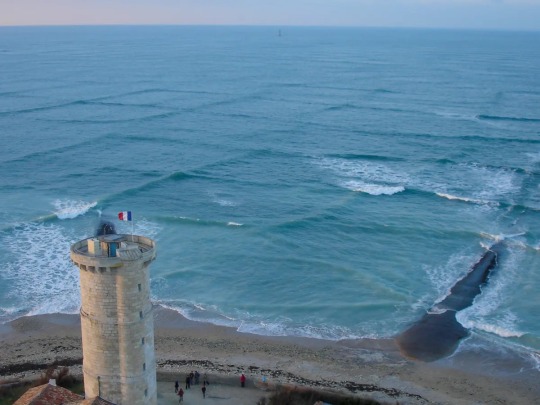#patterns from india
Explore tagged Tumblr posts
Text

New Delhi - India 🌏 4K link
#4k#wallpaper#google earth#satellite view#aerial photography#new delhi#india#symmetry#abstract#texture#pattern#cityscape#urban#earth art#earth from space#earth from above#atlas#dji#worldview#landscape
47 notes
·
View notes
Text
Juni

#FINLLY THE LAST OF THE CREWMATES#I decided to make her the last one becausse I really had no idea what the fuck to do with her#so Juni is from India but moved to the US as a kid#so I was like “do I give her normal ass teen clothes? or do I give her the pretty stuff?”#so I gave her the pretty stuff. but i'm scared of haavibg misrepresented that style so like. sorry if i did :(#i wabted more intricate patterns but I remembered I will eventually draw her again and gave up#Juni is blind and has super-hearing!#she's super extroverted. everyone will be her friend or else#arguably the most normal person in that crew and that's saying something#pretz oc#silly art#🥨🪶#oc: juni
4 notes
·
View notes
Text





Got a Print on Demand Business Idea?
#business#printify#unique prints#print on demand#print on t shirts near me#shop#online shopping#online shops offer#online shop for kidswear india#online shop uk#business ideas#money#make money online#earn money online#make money from home#how to earn money#earn money fast#online income#extra income#design#digital design#graphic design#portfolio#pattern#tshirts#tees#hoodies#screenprint#mugs#coffee mugs
2 notes
·
View notes
Text

Shri SS Global Ventures (SSGV)
Services
Gallery
Careers
Real Estate
Blogs
Contact Us
Log In
Appointment
Shri SS Global Ventures (SSGV)

‘An One Stop Solution Provider’ Shri SS Global Ventures is a Unique Service Provider (USP): If you note our tag line, you might visualize our objective. It is ‘Consider it done’. The most trusted institution where you can leave all your industry, business and property related worries/issues confidently and expect the best possible or available remedy. It deals with legal, taxation, revenue – property related, crime – police related, financial – fraud, IPR, Cyber Crime – issues etc.,
Expert professionals, including former IAS, IPS, IFS, and IRS officers known for their integrity, handle your issues, ensuring the best possible results. A former Supreme Court judge and Directors General of Police from Tamil Nadu and Maharashtra launched this firm to deliver excellence. Supreme Court Judge, Director Generals of Police, Tamilnadu and Maharashtra.
For more useful information click here...
#legal due diligence#title verification#bank opinion#ssgv coimbatore#shri ss global ventures#Shri SS Global Ventures (SSGV)#with legal#taxation#revenue – property related#crime – police related#financial – fraud#IPR#Cyber Crime – issues#Legal Team – with experienced Law Graduates from India’s Top Universities NLSIU#NALSAR#Revenue / Survey Team – with Former. IAS Officer#Addl. Collectors#Dy. Collectors etc.#Tax Experts Team – led by a Former. IRS Officer#Finance / Process Audits – with Eminent Chartered Accountants#and Former Bank Officials#Intellectual Property Right etc.#– Attorneys specialized in Trademark#Pattern Right and Copy Right Laws#.Insurance and Environment Laws – Former. District Level Officers and Conservation of Forest etc.
0 notes
Text
Top Carpet Manufacturers in India: Weaving Tradition and Innovation
Rug manufacturing is surely one of the esteemed arts from the country.Today, India is among the world's largest exporters of handmade rugs, its manufacturers marrying centuries-old craftsmanship with contemporary design to feed a global market.
Conventionally, rug-making has been associated with centers like Bhadohi, Mirzapur, Jaipur, and Kashmir. Each region has its typical style and weaving technique. For example, Kashmir is famous for its silk rugs of high quality, usually with flowing floral motifs, while Bhadohi is characterized by geometrical patterns in woolen rugs. These skills have been passed on from generation to generation, maintaining the heritage and authenticity of Indian rugs.
Blending in New Ideas in Rug Manufacturing
Even though Indian manufacturers give maximum importance to traditional ways of manufacturing rugs, innovation is found in order to be aligned with modern taste and global trends. This fusion of old and new is something that makes Indian rugs different in the international market. There is a rise in experiments with new materials, designs, and technologies for making rugs that are not only pleasing aesthetically but eco-friendly and durable.
Another significant innovation hitting the Indian rug industry is eco-friendly materials.handmade rugs india With people starting to become more aware of the deteriorating environment, most manufacturers have started going green either in natural dyes, organic wool, or recyclable materials for their production. This does not only reduce the environmental impact but also appeals to those consumers who want home decor that is sustainable.
From the design point of view, this has broken the mold of traditional patterns as Indian rug manufacturers include contemporary styles. Most modern Indian rugs boast an abstract design, minimalistic patterns, or a vivid color palette that appeals to the taste of a young, more design-conscious consumer. Meanwhile, there is an interesting trend that looks toward timelessness whereby traditional motifs are mixed with modern tastes. The result is timeless yet trendy rugs.
Top Indian Rug Manufacturers
A few Indian rug manufacturers have carved a niche for themselves among the top-rated names of the global market in terms of both quality and innovation. Companies such as Obeetee, Jaipur Rugs, and The Rug Republic are only a few to name that exude the blend of tradition with modernity.
Obeetee is amongst India's oldest and most reputed rug manufacturers, with its base in Mirzapur.Handmade Rugs Manufacturer Founded as early as 1920, it has had ample time to establish itself in the high-quality art of manufacturing rugs by hand. Very well known, Obeetee goes for traditional craftsmanship in weavings apart from including modern elements in its designing. The company is also at the vanguard in terms of sustainability, using eco-friendly materials and practices in production.
Innovation in Jaipur has become coupled with Jaipur Rugs, an Indian enterprise based out of Jaipur. Directly working with artisans in rural India, the company provides resources and support to skilled artisans who can create this art of beauty in handmade rugs. In addition, Jaipur Rugs is known for its contemporary designs and social impact initiatives that are undertaken to uplift and empower local communities.
Then there is the Panipat-based enterprise known as The Rug Republic, which is another major player in this field.Rugs manufacturers in india It specializes in modern, eco-friendly rugs manufactured from recycled materials. Innovative approaches to design and sustainability make The Rug Republic the favorite of consumers in search of stylish and environmentally conscious home décor options.
Conclusion
The success of rug manufacturing in India comes from the perfect balancing of tradition with innovation. While preserving ancient techniques, Indian rug manufacturers also use new materials, designs, and technologies to create products finding their place in the hearts of every consumer all over the world. As these manufacturers keep evolving, they are not only keeping the rich rug-making heritage of India alive but setting new standards for quality and creativity in the global market.
#Rug manufacturing is surely one of the esteemed arts from the country.Today#India is among the world's largest exporters of handmade rugs#its manufacturers marrying centuries-old craftsmanship with contemporary design to feed a global market.#Conventionally#rug-making has been associated with centers like Bhadohi#Mirzapur#Jaipur#and Kashmir. Each region has its typical style and weaving technique. For example#Kashmir is famous for its silk rugs of high quality#usually with flowing floral motifs#while Bhadohi is characterized by geometrical patterns in woolen rugs. These skills have been passed on from generation to generation#maintaining the heritage and authenticity of Indian rugs.#Blending in New Ideas in Rug Manufacturing#Even though Indian manufacturers give maximum importance to traditional ways of manufacturing rugs#innovation is found in order to be aligned with modern taste and global trends. This fusion of old and new is something that makes Indian r#designs#and technologies for making rugs that are not only pleasing aesthetically but eco-friendly and durable.#Another significant innovation hitting the Indian rug industry is eco-friendly materials.handmade rugs india With people starting to become#most manufacturers have started going green either in natural dyes#organic wool#or recyclable materials for their production. This does not only reduce the environmental impact but also appeals to those consumers who wa#From the design point of view#this has broken the mold of traditional patterns as Indian rug manufacturers include contemporary styles. Most modern Indian rugs boast an#minimalistic patterns#or a vivid color palette that appeals to the taste of a young#more design-conscious consumer. Meanwhile#there is an interesting trend that looks toward timelessness whereby traditional motifs are mixed with modern tastes. The result is timeles#Top Indian Rug Manufacturers#A few Indian rug manufacturers have carved a niche for themselves among the top-rated names of the global market in terms of both quality a#Jaipur Rugs
0 notes
Text
☠️ Only for Stede Bonnet would I learn of brocade, damask, and jacquard fabric. ☠️
#avast ye; ooc#if stede lived in britain he'd be a rebel buying imported patterned cotton from india
1 note
·
View note
Text

In the depth of the central lake the floor of this enormous body of water gets next to no light from the surface. Here a drastically different ecosystem thrives. We call it the worm zone, for it's diversity of large worms that lives of the carrion from above, bacterial lawns and small living prey items. Many species down here are endemic, but certain species are making migrations to the surface at night or visit on deep dives.
On Lemuria
Lemuria is a new spec evo project for and by the #paleostream community. Like the Atlantis project beforehand it deals with a fictional piece of land in 3 phases. Lemuria is an already existent concept that was invented before the recognition of plate tectonics to explain certain distribution patterns of animals and plants. In our case Lemuria is a continent consisting of India and Madagascar. We speculate how animals and plants would evolve if these two would never separate. This has MANY consequences. And the further we progress through time the more natural history will change. Phase one deals with the Cretaceous, when things are still rather "normal".
1K notes
·
View notes
Text
Camera-trapping data revealed in a new study show a steady recovery of tigers in Thailand’s Western Forest Complex over the past two decades.
The tiger recovery has been mirrored by a simultaneous increase in the numbers of the tigers’ prey animals, such as sambar deer and types of wild cattle.
The authors attribute the recovery of the tigers and their prey to long-term efforts to strengthen systematic ranger patrols to control poaching as well as efforts to restore key habitats and water sources.
Experts say the lessons learnt can be applied to support tiger recovery in other parts of Thailand and underscore the importance of the core WEFCOM population as a vital source of tigers repopulating adjacent landscapes.
The tiger population density in a series of protected areas in western Thailand has more than doubled over the past two decades, according to new survey data.
Thailand is the final stronghold of the Indochinese tiger (Panthera tigris corbetti), the subspecies having been extirpated from neighboring Cambodia, Laos and Vietnam over the past decade due to poaching, habitat loss and indiscriminate snaring...
Fewer than 200 tigers are thought to remain in Thailand’s national parks and wildlife sanctuaries, only a handful of which are sufficiently undisturbed and well-protected to preserve breeding tigers.
The most important of these protected areas for tigers is the Huai Kha Khaeng Thung Yai (HKK-TY) UNESCO World Heritage Site, which comprises three distinct reserves out of the 17 that make up Thailand’s Western Forest Complex (WEFCOM). Together, these three reserves — Huai Kha Khaeng Wildlife Sanctuary, Thungyai Naresuan West and Thungyai Naresuan East — account for more than a third of the entire WEFCOM landscape.
Now, a new study published in Global Ecology and Conservation documents a steady recovery of tigers within the HKK-TY reserves since camera trap surveys began in 2007. The most recent year of surveys, which concluded in November 2023, photographed 94 individual tigers, up from 75 individuals in the previous year, and from fewer than 40 in 2007.
Healthy tiger families

The study findings reveal that the tiger population grew on average 4% per year in Hua Kha Khaeng Wildlife Sanctuary, the largest and longest-protected of the reserves, corresponding to an increase in tiger density from 1.3 tigers per 100 square kilometers, to 2.9 tigers/100 km2.
“Tiger recoveries in Southeast Asia are few, and examples such as these highlight that recoveries can be supported outside of South Asia, where most of the good news [about tigers] appears to come from,” said Abishek Harihar, tiger program director for Panthera, the global wildcat conservation organization, who was not involved in the study.
Among the camera trap footage gathered in HKK-TY over the years were encouraging scenes of healthy tiger families, including one instance of a mother tiger and her three grownup cubs lapping water and lounging in a jacuzzi-sized watering hole. The tiger family stayed by the water source for five days during the height of the dry season.
The team of researchers from Thailand’s Department of National Parks, Wildlife and Plant Conservation, the Wildlife Conservation Society, Kasetsart University, and India’s Center for Wildlife Studies deployed camera traps at more than 270 separate locations throughout the HKK-TY reserves, amassing 98,305 days’ worth of camera-trap data over the 19-year study period.
Using software that identifies individual tigers by their unique stripe patterns, they built a reference database of all known tigers frequenting the three reserves. A total of 291 individual tigers older than 1 year were recorded, as well as 67 cubs younger than 1 year [over the course of the study].
Ten of the tigers were photographed in more than one of the reserves, indicating their territories straddled the reserve boundaries. The authors conclude that each of the three reserves has a solid breeding tiger population and that, taken together, the HKK-TY landscape is a vital source of tigers that could potentially repopulate surrounding areas where they’ve been lost. This is supported by cases of known HKK-TY tigers dispersing into neighboring parts of WEFCOM and even across the border into Myanmar.
Conservation efforts pay off
Anak Pattanavibool, study co-author and Thailand country director at the Wildlife Conservation Society, told Mongabay that population models that take into account the full extent of suitable habitat available to tigers within the reserves and the likelihood that some tigers inevitably go undetected by camera surveys indicate there could be up to 140 tigers within the HKK-YT landscape.
Anak told Mongabay the tiger recovery is a clear indication that conservation efforts are starting to pay off. In particular, long-term action to strengthen systematic ranger patrols to control poaching as well as efforts to boost the tigers’ prey populations seem to be working, he said.
“Conservation success takes time. At the beginning we didn’t have much confidence that it would be possible [to recover tiger numbers], but we’ve been patient,” Anak said. For him, the turning point came in 2012, when authorities arrested and — with the aid of tiger stripe recognition software — prosecuted several tiger-poaching gangs operating in Huai Kha Khaeng. “These cases sent a strong message to poaching gangs and they stopped coming to these forests,” he said."
...ranger teams have detected no tiger poaching in the HKK-TY part of WEFCOM since 2013.
-via Mongabay News, July 17, 2024
#tigers#thailand#thai#endangered species#big cats#conservation#wildlife#wildlife conservation#wildlife photography#poaching#good news#hope
2K notes
·
View notes
Text
cultural phenomenon: blinking as greeting
(like in place of nodding / tilting your head)
#picked this up from my philipino coworker a bajillion years ago#since noticed that people from india tend to do this as well#pattern enjoyer 💖
1 note
·
View note
Text

#bestindustry #bestoffers #OnTimeDelivery #bestprice #goodservice #donateorgansavelives #Hi-Tech Automationplugs and sockets?Image result for 6 way plug and socket DEFINITIONA plug is the movable connector attached to an electrically operated device, and the socket is fixed on equipment or a building structure and connected to an energised electrical circuit. The plug is a male connector, often with protruding pins that match the openings and female contacts in a socket. plug is suitable for India?For India there are three associated plug types, types C, D and M. Plug type C is the plug which has two round pins, plug type D is the plug which has three round pins in a triangular pattern and plug type M is the plug which also has three round pins. India operates on a 230V supply voltage and 50Hz.add a 6 pin power supply?Image resultLocate the 6–pin auxiliary power supply cable with the connector labeled To GFX Card or Splitter and release the cable from the cable retainer. If the splitter cable is attached to the connector, remove and retain the splitter. Attach the 6–pin connector on the adapter cable to the 6–pin power supply cable.6 pin used for?6-pin power connectors are typically found in low and mid-range graphics cards. The 6-pin power connector has 4.2mm pitch and can pull up to 75 watts of power directly from an external power supply, bypassing the motherboard entirely.6 amp socket used for?6/16A and 25A ratings. They are used for connecting geysers, AC, Room heaters , Kitchen appliances and water pumpsCan we use 16A plug in 6A socket?Yes it is safe to use a 16 amp plug on a 6 amp socket provided you will never draw more than 6Amp out of it, and it is very unsafe if you forgot this rule and accidently loaded it with a resistive load over > 6 Amp.convert 6A socket to 16A?Image resultThe package contains 1pc Conversion Plug(6A-16A) KAVANA (6-16A)Converter plug is used to Convert Regular Home Sockets of 6 amp to 16amp Outlets so that one can attach 16A Big Size Plugs to the Small home Sockets. Its applications include powering of 16A loads or International Plug Tops from various countries 6 pin connector called?The '6-PIN bayonet connection' is also called a '6-pin plug'. You will find this connection mainly on Fristom lights. The connector looks very much like the much used Aspöck variant with 5-PINs or 7-PINs.
#bestindustry#bestoffers#OnTimeDelivery#bestprice#goodservice#donateorgansavelives#Hi-Tech Automation#plugs and sockets?#Image result for 6 way plug and socket DEFINITION#A plug is the movable connector attached to an electrically operated device#and the socket is fixed on equipment or a building structure and connected to an energised electrical circuit. The plug is a male connector#often with protruding pins that match the openings and female contacts in a socket.#plug is suitable for India?#For India there are three associated plug types#types C#D and M. Plug type C is the plug which has two round pins#plug type D is the plug which has three round pins in a triangular pattern and plug type M is the plug which also has three round pins. Ind#add a 6 pin power supply?#Image result#Locate the 6–pin auxiliary power supply cable with the connector labeled To GFX Card or Splitter and release the cable from the cable retai#remove and retain the splitter. Attach the 6–pin connector on the adapter cable to the 6–pin power supply cable.#6 pin used for?#6-pin power connectors are typically found in low and mid-range graphics cards. The 6-pin power connector has 4.2mm pitch and can pull up t#bypassing the motherboard entirely.#6 amp socket used for?#6/16A and 25A ratings. They are used for connecting geysers#AC#Room heaters#Kitchen appliances and water pumps#Can we use 16A plug in 6A socket?
0 notes
Text
We all love the beach, right? I sure do. Where the sea meets the land is a magical place. It is the overlap of two very different worlds; our sunny, sandy, beautiful home and the alien waves that beckon you into the inhospitable wilderness of the ocean. When crossing that foam-fringed boundary, one must remember that you are no longer in your world. You are entering the sea, and the sea is vast and dark and dangerous. It is more untamed than the wildest jungle and full of creatures that can kill you in a hundred different gruesome ways. Every wave whispers to you that you do not belong here, you may only visit for a brief time if you want to leave with your life. Hold tight to the warm sunlit sand that fringes the barrier of this place, or you may never see it again. Welcome to the beach. Enter at your own risk.
1. Tamarama beach, Australia

This is know as both the smallest and the most dangerous beach in NSW. There is a permanent rip current that runs along the rocky northern shore, but at any given time there could be more hidden in the surf. Large waves break just a little ways offshore, posing a hazard to swimmers but an attraction for surfers. Although there are rarely deaths here, lifeguards have to rescue multiple people a day. Interestingly, this beach is only around sometimes! Occasionally all the sand will wash away and all that’s left is a rocky outcrop. There’s no way to be certain when the beach will come back or how big it will be or what it might look like. I guess it never gets boring to visit.
2. Isle of Ré, France

This island is not the only place you can go to see square waves, but it is one of the places most famous for this strange phenomenon. This is called a cross sea, and occurs when two opposing wave patterns intersect. Although this is certainly a tourist attraction, it is best to observe from a distance, as cross seas can be very dangerous to both ships and swimmers. Cross seas can cause powerful rip currents and walls of water up to 10 feet high, rolling ships and dragging people underwater. (As a side note, my mother thought I had made up cross seas as a freaky supernatural event in my book. Unfortunately, I did not.)
3. Dumas Beach, India

This is supposedly one of the most haunted places in India. Although this beach is full of tourists during the daytime, no one remains after dark, for fear that they will become the next ghost to wander the sand. Apparently, this beach was once used as a burial ground, and said to be black due to the human ashes mixed in. At night, people report hearing voices and seeing apparitions, and even dogs behave strangely once the sun goes down. There have also been multiple unexplained disappearances and at least one recorded death. Whether you believe in ghosts or not, there definitely seems to be something eerie happening on this beach.
4. Morecambe Bay, UK

This is an interesting one, as it’s not technically the water that’s dangerous. The ground is. This estuary features extreme tides, with the water level dropping and rising up to 32 feet twice a day. This exposes an expanse of mud flats and channels which are composed of loose, wet material that can absolutely suck you in and trap you. If this happens when the tide is coming in, it can quickly turn deadly. This has happened many times going back through history, including one incident in 2004 where 23 people died. Yes, all at the same time. No, I don’t want to delve into that incident too deeply in this list as it’s extremely horrifying and tragic. Feel free to research it yourself.
5. Monastery Beach, Oregon

This has earned its nickname “mortuary beach” by being extremely dangerous. Over 30 people have died here, including people who weren’t even in the water. In 2015, a woman walking along the beach was dragged in by a wave and drowned. The beach has multiple factors that make it so deadly, including a steep drop off, unpredictable waves, and strong undertows. This beach isn’t even safe to walk on. I um. Don’t like that.
6. Hanakapiai Beach, Hawaii

Despite its beauty, this Hawaiian beach is not recommended for swimming except for expert surfers. During the summer, this beach is a popular place for hiking, sunbathing and sightseeing, but during the winter the sand is washed away and the waves crash against the cliffs directly. Even in the relatively safe summer months, this beach has no barrier reef to break up the strong waves and powerful currents, which leads to a dangerous situation where swimmers can quickly be swept out into the open ocean and drown. At least 30 people have died here, and 15 of the bodies have never been recovered.
7. Lake Michigan. Just, all of it.

Despite all the Great Lakes being somewhat terrifying, Michigan takes the title of the most dangerous lake in the country. Yearly, Lake Michigan has more drownings than all four other Great Lakes combined. The reason that Michigan is especially hazardous is that, well, it’s kind of weirdly shaped. Thanks to its 300+ miles of uninterrupted parallel shorelines running north-south, it forms huge waves and strong riptides and long shore currents. It is also a question of numbers; Lake Michigan has more public beaches and large population centers than the other Great Lakes. All in all, a recipe for disaster.
8. Playa Zipolite, Mexico

This is also called the “beach of the dead”, so it’s inclusion on this list seems pretty self-explanatory. These waters have strong undercurrents that rotate in a circular pattern, either pushing you into shore or pulling you out to sea. There is a pervasive rumor that 50 people drown at this beach a year, although this is… somewhat exaggerated. In fact, very few people drown at this beach these days, as it has actually gotten less dangerous over the years. There used to be a steep drop-off that would catch people by surprise, but due to several severe storms in the early 2000s, the beach has eroded back and now gently slopes down instead. Although very few people die at this beach nowadays, multiple rescues are performed every day due to the dangerous currents.
9. Cyclops, Australia
This is a particular type of wave that forms off the coast of Esperance, Australia, as the sea floor rapidly goes from deep, open water to a very very shallow reef. It is… unsettling. The longer I look at it, the weirder it gets. It’s like an ai generated image. I couldn’t even pick one picture of it so I made you a collage.

It is considered one of the most dangerous surf spots in the world, and can only be accessed by boat. To quote pacific surf dot com, “the reason the wave is dangerous is because it does not act like any other wave in the world. It engulfs itself due to the massive change in the ocean floor when the wave rolls up.”
10. Nazare, Portugal

This area of Portugal is home to some of the biggest waves in the world. Just offshore is an underwater canyon, plunging down to 16,000 ft deep. This allows large, fast deep-water waves to move into shore unimpeded, and when they hit the shallows close to shore all the water gets suddenly pushed up, resulting in waves up to 80 ft tall. I think the picture speaks for itself in this case. Probably best to not get in the water if you see that shit.
That was fun, wasn’t it? Before I go, let me end this on a different note than the rest of my lists; some actual advice for if you should you ever decide to visit these beaches (or any beach, really). Rip currents are incredibly strong (believe me, I know) but very narrow currents that run perpendicular to shore. To get out of a rip current, swim parallel to shore. Trying to fight the current will just tire you out and eventually leave you exhausted and way the fuck out in the ocean, which is typically when you die. Swimming parallel to shore will get you out of the current, and once you’re free you can swim back in at your leisure. And, just in general, never fight the sea. The sea will win.
8K notes
·
View notes
Text
curated weird looking cats from iNaturalist

incredible creature from Oman

Unusually beautiful striped cat from Thailand

Another strange looking cat from Oman

This creature, didn't save the location sadly

Mexico

Russia. this beast has been thru it

Thailand

Serbia, loving the fiery markings on her eyebrows

Puerto Rico

Thailand again

Hong Kong, what a gorgeous coloring/pattern

Malaysia, it resembles a wild cat of some kind

Bhutan

Maine, USA, seems to be a bengal mix?

Hong Kong, never seen anything like this tabby pattern...

India

Thailand

Thailand again, a different cat, but a similar pattern.

India

Mexico, a cat with a stripe down the back

New York, USA...what color is this animal

New Zealand, assuming it is a Bengal mix again
777 notes
·
View notes
Text
In the current epidemic of rich Western women who cannot “choose” to eat, we see the continuation of an older, poorer tradition of women’s relation to food. Modern Western female dieting descends from a long history. Women have always had to eat differently from men: less and worse. In Hellenistic Rome, reports classicist Sarah B. Pomeroy, boys were rationed sixteen measures of meal to twelve measures allotted to girls. In medieval France, according to historian John Boswell, women received two thirds of the grain allocated to men. Throughout history, when there is only so much to eat, women get little, or none: A common explanation among anthropologists for female infanticide is that food shortage provokes it. According to UN publications, where hunger goes, women meet it first: In Bangladesh and Botswana, female infants die more frequently than male, and girls are more often malnourished, because they are given smaller portions. In Turkey, India, Pakistan, North Africa, and the Middle East, men get the lion’s share of what food there is, regardless of women’s caloric needs. “It is not the caloric value of work which is represented in the patterns of food consumption” of men in relation to women in North Africa, “nor is it a question of physiological needs…. Rather these patterns tend to guarantee priority rights to the ‘important’ members of society, that is, adult men.” In Morocco, if women are guests, “they will swear they have eaten already” or that they are not hungry. “Small girls soon learn to offer their share to visitors, to refuse meat and deny hunger.” A North African woman described by anthropologist Vanessa Mahler assured her fellow diners that “she preferred bones to meat.” Men, however, Mahler reports, “are supposed to be exempt from facing scarcity which is shared out among women and children.”
“Third World countries provide examples of undernourished female and well-nourished male children, where what food there is goes to the boys of the family,” a UN report testifies. Two thirds of women in Asia, half of all women in Africa, and a sixth of Latin American women are anemic—through lack of food. Fifty percent more Nepali women than men go blind from lack of food. Cross-culturally, men receive hot meals, more protein, and the first helpings of a dish, while women eat the cooling leftovers, often having to use deceit and cunning to get enough to eat. “Moreover, what food they do receive is consistently less nutritious.”
This pattern is not restricted to the Third World: Most Western women alive today can recall versions of it at their mothers’ or grandmothers’ table: British miners’ wives eating the grease-soaked bread left over after their husbands had eaten the meat; Italian and Jewish wives taking the part of the bird no one else would want.
These patterns of behavior are standard in the affluent West today, perpetuated by the culture of female caloric self-deprivation. A generation ago, the justification for this traditional apportioning shifted: Women still went without, ate leftovers, hoarded food, used deceit to get it—but blamed themselves. Our mothers still exiled themselves from the family circle that was eating cake with silver cutlery off Wedgwood china, and we would come upon them in the kitchen, furtively devouring the remains. The traditional pattern was cloaked in modern shame, but otherwise changed little. Weight control became its rationale once natural inferiority went out of fashion.
— Naomi Wolf (1990) The Beauty Myth
#hunger#long post#naomi wolf#the beauty myth#radblr#radfem#radical feminism#radfem safe#radical feminist safe#!!!
815 notes
·
View notes
Text
Midnight Pals: Shedding
[mysterious circle of robed figures] JK Rowling: hello children Rowling: i have terrible, bone-chilling newsss Rowling: did you know that india willoughby exisssstsss? Rowling: thiss makess me ssso mad
Rowling: i know you're all ussed to me being ssubtle Rowling: you know, talking about womensss ssafety and all that Rowling: but i'm done with that Rowling: now i enter endgame
Rowling: tonight my rage ssshall fuel my final transssformation Rowling: tonight i sshed my ssskin for the lassst time Rowling: gone will be the resspectable normie lib ssspotted patterning Rowling: henceforth i shall wear banded patterning [puts on arm band]
Rowling: now i sshed my ssskin and obsserve my transformation to full blood purity fascism Helen Joyce: but dark lord! it's too obvious! Joyce: what if the rubes notice? Rowling: just point to that old "wear whatever you want" post and pretend i meant it
Rowling: i'll be right back, gonna go shed a sskin Rowling: now before i leave one lasst directive Rowling: you lot don't do anything ssilly while i'm gone Rowling: you know, anything that would make our entire causse look dumb or anything Joyce: you can count on us, dark lord!
[Rowling exits] Joyce: so Joyce: anyone wanna hear this new fan fic i've been working on Jesse Singal: when does mommy get back
Joyce: so Joyce: so my story has draco/hermione otp, noncon, dubcon, cuckolding, underage, lemon, coffeeshop au, crackfic Kathleen Stock: noooo helen! don't read fanfic! don't you know fanfic turns you trans? Joyce: sorry its a risk i have to take Joyce: for science
Joyce: look, i'm going to scientifically prove that fanfiction turns you trans Joyce: luckily i'm built of stronger stuff Joyce: the rest of you just plug your ears Stock: what about you, helen? Joyce: lash me to the mast
Stock: i've been writing a fan fic too Stock: it's about the love between the Unknown, an evil choclatier who lives in the walls, and this mysteriously sexy lady oompa loompa who everybody loves who is named Stathleen Kock [permaberry, leaking juice, enjoyment, enemies to lovers]
Rowling: ok i'm back Helen Joyce: dark lord! how does it feel to shed your lib skin of plausible deniability to don your extremely online skin of blood purity? Rowling: i feel sstrong! powerful! like a new ssnake! Rowling: i feel like i can sssay Rowling: ALL THE SSSLURSS!!!
Rowling: tinktonk! cricklecrack! boofnoggin! i can sssay them all!!! Rowling: no now mudblood can ssstand in my way! Rowling: doess india willoughby still exissst? Joyce: yes dark lord! Rowling: [coiling in rage] the cheek!!!! the audacity!!!
Rowling: ugh, look at india willoughby, performing feminine joy! Rowling: womanhood isn't about joy! Rowling: true femininity is being miserable all the time, posting and also being banned from seeing your grandchildren
#midnight pals#the midnight society#midnight society#jk rowling#helen joyce#kathleen stock#jesse singal
1K notes
·
View notes
Text
A large part of woman's work is liberating ourselves from the judgement of being seen- to say the things that aren't supposed to be said, to move, walk, fuck (deepen and open), rest, live, breathe, and speak (make sound) in ways that we weren’t necessarily taught. To be so authentic that it's charming and contagious. Your voice has people who need to hear it. What you see and feel wants to be seen and felt. Allow your own acceptance of who you are be your guiding light. And do what you can do to care for yourself and genuinely care for others. And what you can’t do for whatever reason, feel grace and let it go. No institution can save you, only coming home to your body and connecting to your own soul, imagination, and instincts in meaningful ways can. But coming fully alive in your female tissues is not usury. It is a system of healthy habits and healthy patterns. And a healthy female body is an emotionally intelligent process requiring skillful devotion, ongoing grounding, relaxation, hydration, and strategy. Pick a strategy to align you to your next level. Whatever your strategy is, stick with it until it is time to evolve into a new one and the next level. Stop looking around and trying to notice how people are perceiving you which is putting a band-aid on your self-esteem issues and lack of approval in who you are. Don’t try to behave or act in certain ways in order to get someone to like you because you will never be truly loved and adored that way. No matter what you do in life, falling in love with yourself (your cells) and healing your heart will always be part of the process. Keep all promises you make to yourself. To go after your truest desires will stretch you many times beyond your comfort zone in ways that won’t always be so clear, linear, or straightforward. None of it may be easy, but those who have the greatest abilities and gifts usually will go through the greatest challenges towards getting there. The beauty in the dark is that you will never experience any challenge that you don’t have equal or greater power to master and overcome. If you have healthy human and/or animal community, how beautiful! All fears of being overwhelmed or abandoned by life will be eased. And tapping into spirituality/the divine feminine will help you unlock deeper more mysterious truths about life and other suppressed, repressed, and purifying sensations from the inside out like abundance consciousness. Your body is your best outfit. Anything else is extra. Take care of it. —India Ame'ye, Author
153 notes
·
View notes
Text

Oroperipatus tiputini: A new species of Velvet Worm from the Ecuadorian Amazon.
Velvet Worms, Onychophora, are a unique group of elongate, soft bodied, many legged Animals, given phylum status and considered to be among the closest living relatives to the Arthropods. They are currently the only known phylum of Animals known entirely from terrestrial species, both living and fossil, although they may be related to the Lobopodans, an entirely marine group known only from Early Palaeozoic fossils. The 230 living Velvet Worm species are divided into two groups, the Peripatidae, found in the tropics of Central and South America, the Antilles Islands, Gabon, India, and Southeast Asia, and the Peripatopsidae, found in Chile, South Africa, Papua New Guinea, Australia, and New Zealand. All South American members of the Peripatidae are placed within a single clade, the Neopatida, which is further divided into two lineages, the 'Andean' genus Oroperipatus, and the 'Caribbean' lineage, comprising all other genera. Read the paper: (https://zse.pensoft.net/article/117952/) The new species is described from five male, three female, and three juvenile specimens collected in the vacinity of the Tiputini Biodiversity Station of the Universidad San Francisco de Quito in Orellana Province, Ecuador, between 2001 and 2023, as well as one youngling, which one of the female specimens gave birth to in captivity. The new species is named Oroperipatus tiputini, in reference to the location where it was discovered. Adult female specimens of Oroperipatus tiputini very between 46 and 65.3 mm in length, while the adult males are smaller at 22.7 to 39.8 mm. Females have between 37 and 40 pairs of legs, while the males have between 34 and 37, although one male specimen had a different number of legs on each side, with 35 legs on the right and 36 legs on the left. The species shows considable colour variation, with one adult male being a light brown colour with a faint rhomboid pattern, two adult males and one adult female being brown with orange diamonds, and another female (the one which produced a youngling) being a plain dark orange colour. The youngling itself was yellowish with a diamond pattern. All specimens were darked on their heads and antenae, had orange or brown legs, and a distinctive white band on the head. Most specimens of Oroperipatus tiputini were found on small herbaceous Plants within old growth, closed canopy upland forests around the Tiputini Biodiversity Station. Other specimens were found in leaf litter, or on the butress roots of trees to a height of about 70 cm above the ground. One specimen was found in a Bromiliad. The Worms were more active at night.
IMAGE: Colour variation in the life of Oroperipatus tiputini. (A) Adult male paratype, ZSFQ-i8270; (B) adult male paratype, ZSFQ-i5151; (C) adult female holotype, ZSFQ-i8248, and youngling paratype, ZSFQ-17794, a few days after being born. All photographs were taken at the Tiputini Biodiversity Station. Photographs by Pedro Peñaherrera (A), (C) and Diego Cisneros-Heredia (B).
293 notes
·
View notes